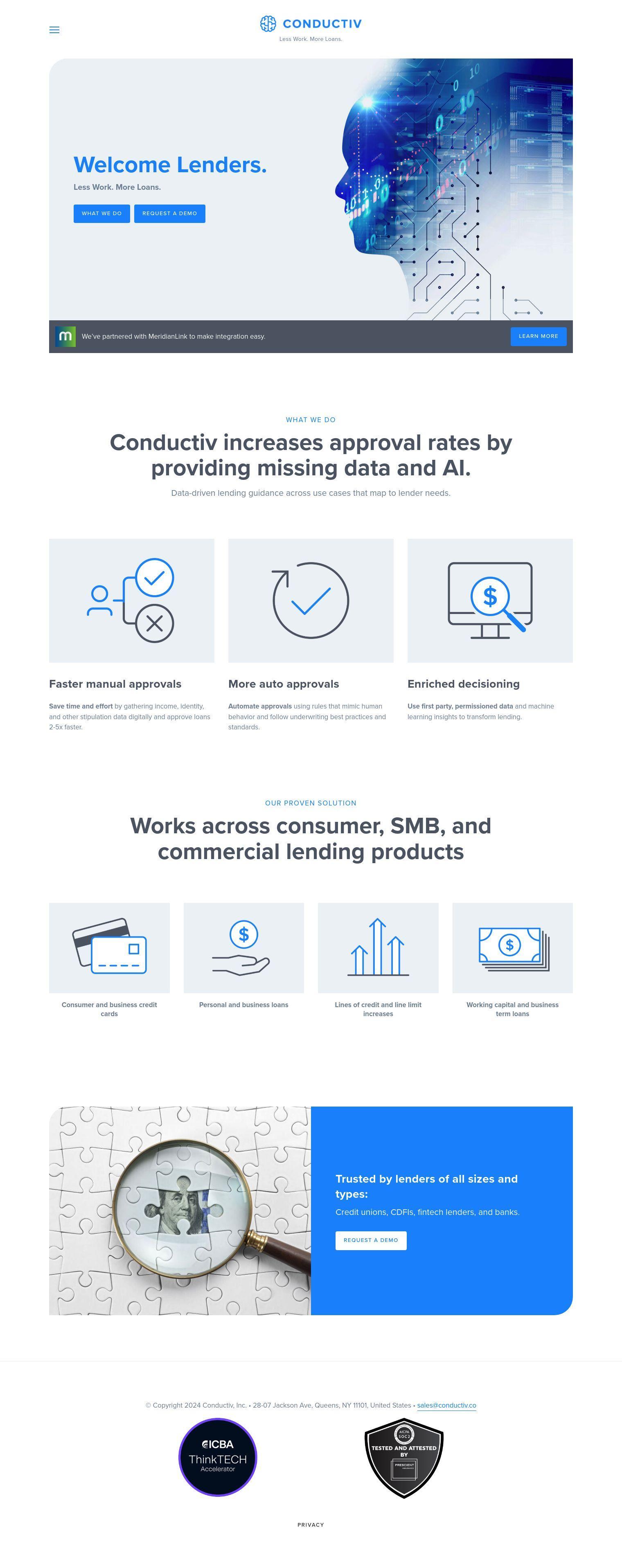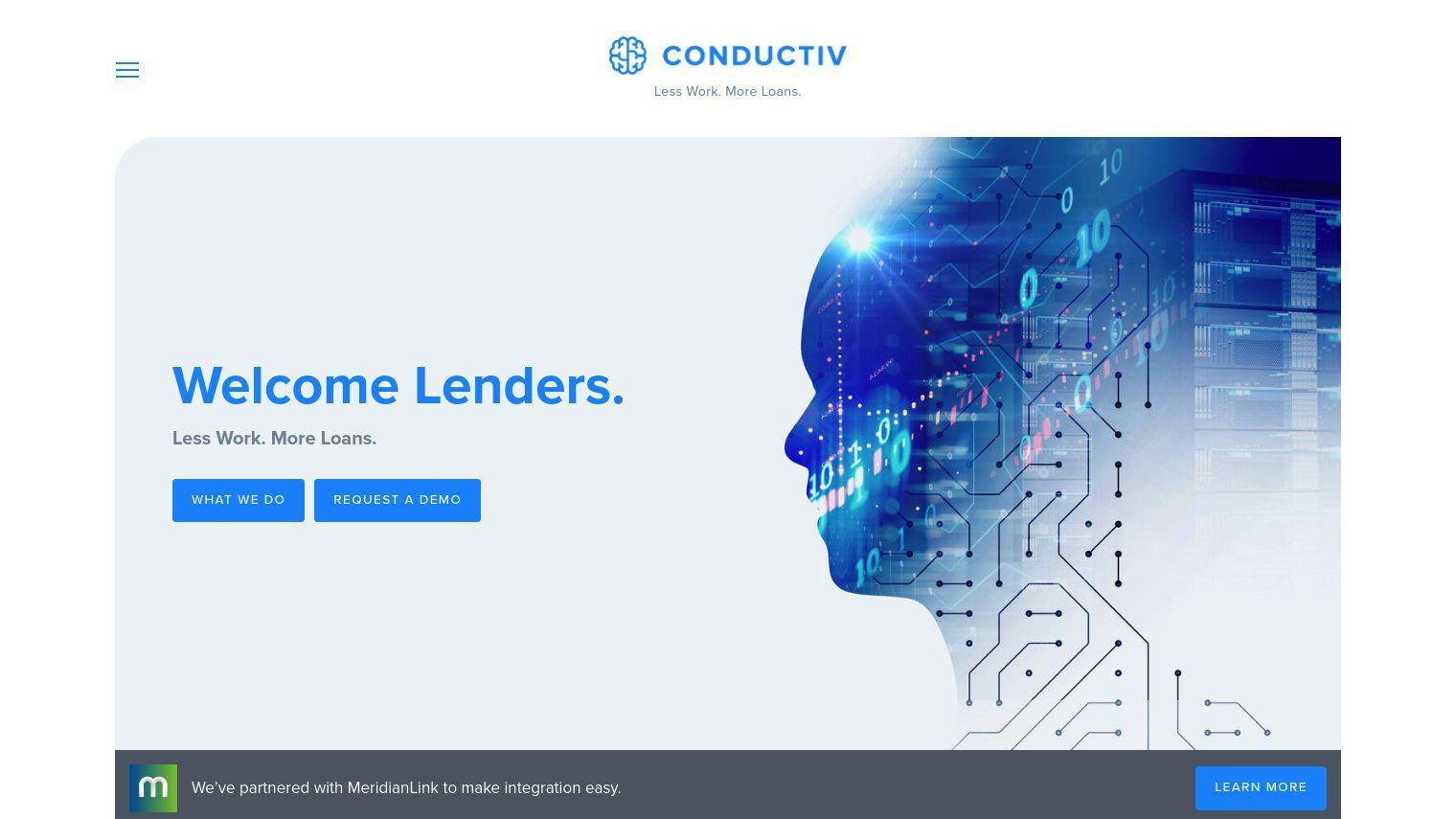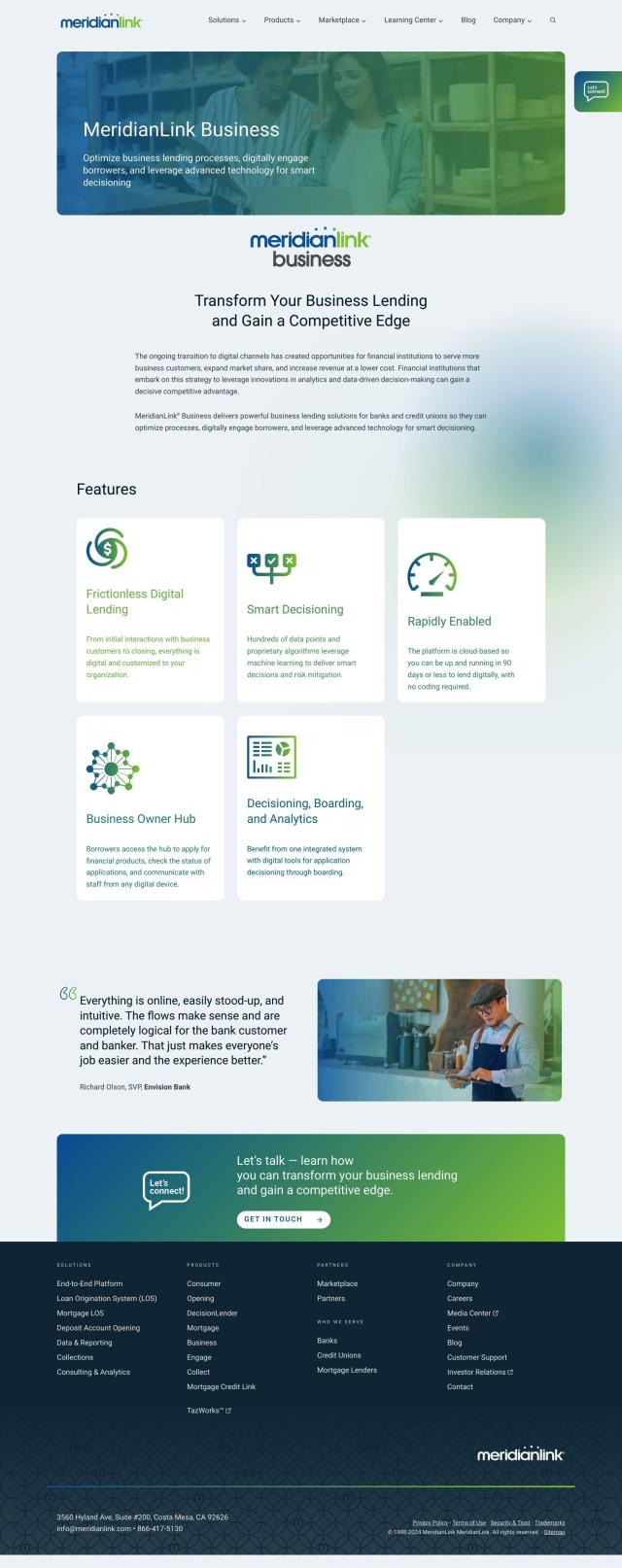Conductiv is designed to help lenders lend more efficiently and accurately by filling in gaps in data and offering AI-powered insights. The platform is designed to increase approval rates by digitally collecting income, identity and other stipulation data, automating approvals with rules-based processes that simulate human judgment, and adding first-party permissioned data and machine learning to decision-making processes.
Conductiv can be used for a variety of lending products, including consumer and business credit cards, personal and business loans, lines of credit and working capital and term loans. The company says it's particularly useful for credit unions, community development financial institutions (CDFIs), fintech lenders and banks.
Among Conductiv's features are:
- Faster manual approvals: Collect income, identity and stipulation data digitally, not manually.
- More auto approvals: Automate approvals with rules-based processes that follow underwriting best practices.
- Enriched decision-making: Use permissioned data and machine learning insights to make more informed lending decisions.
Conductiv collects a variety of data points for lending decisions, including wages, adjusted gross income, account balances, payment history and delinquency history. It does so without storing personally identifiable information (PII), which helps with security and compliance.
The platform can be integrated with existing systems, like MeridianLink, and can be set up quickly. Conductiv can be used by lenders of all sizes and types, and it's designed to be a scalable solution to help them improve lending.
Pricing isn't disclosed; interested parties can request a demo to learn more about Conductiv's products and pricing.
By combining alternative data sources and AI, Conductiv hopes to make lending more efficient and accessible, and to help financial institutions increase approvals and grow their lending businesses.
Published on August 8, 2024
Related Questions
Tool Suggestions
Analyzing Conductiv...







